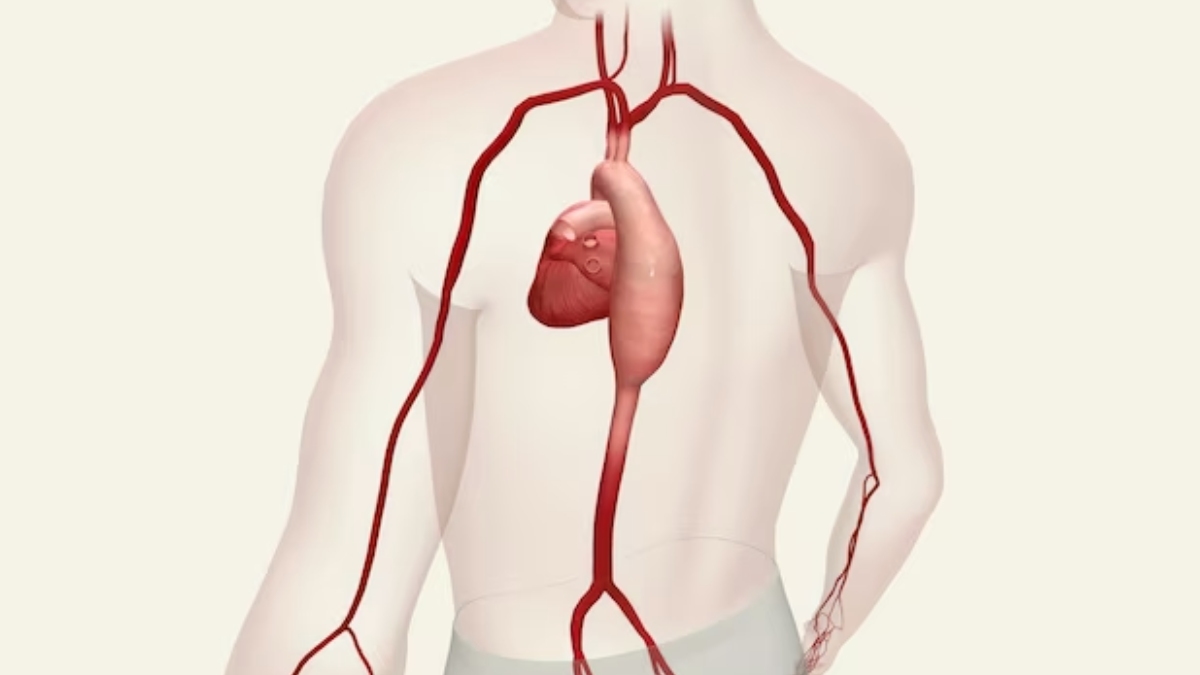
Jo Linder, widely known as 'Joesthetics,' has tragically passed away is a news that has sent shockwaves through the fitness community. With a staggering 8.4 million followers on Instagram, the 30-year-old German fitness influencer had become a revered figure, admired for his unflagging dedication towards intense gym workouts and training regimens.
Table of Content:-
The news of Joesthetics' sudden demise has left his legion of fans in disbelief and sorrow. Known for his charismatic personality and chiseled physique, the bodybuilder's untimely departure has created a void in the fitness world that will not easily be filled.
Aneurysm Might Be A Potential Cause Behind Jo’s Death
In a heartfelt message, Joesthetics' devastated girlfriend revealed that he had been experiencing neck pain just three days prior to his passing. Sadly, they were unaware of the severity of the situation until it was too late. The shocking revelation has left many questioning what might have caused such a tragic outcome.
View this post on Instagram
As per the media reports, aneurysm is a potential cause of Joesthetics' demise. It is a serious medical condition that demands attention. It occurs when a weakened blood vessel in the brain becomes enlarged and prone to rupture. The exact cause of an aneurysm can vary, including genetic predispositions, high blood pressure, smoking, and certain medical conditions. However, it is important to note that aneurysms can also occur spontaneously without any identifiable risk factors.

According to Dr Vipul Gupta, Chief of Neuro-interventional Surgery and Co-Chief of Stroke Unit at the Artemis Hospitals in Gurgaon, aneurysm refers to a bulge or ballooning of a weakened blood vessel. It can occur in any part of the body, but most commonly affects the arteries that supply blood to the brain.
Also read: Brain Tumour Headaches: What Are Its Recognising Symptoms and Sensations?
Causes of Aneurysms
Dr Gupta said, "when the vessels are forming, sometimes one particular area becomes weak and continues to swell."
“The cause of aneurysm is partly a question of chance and luck. Women in their forties and fifties are more prone to brain aneurysms. Aneurysms are more likely to form and burst in those who are extremely hypertensive, smoke heavily, or are alcoholics. Most aneurysms are caused by bad luck, when the blood vessel becomes weak and enlarged,” He added.
Other Causes May Include:
- Trauma: Physical trauma or injury to blood vessels can lead to the formation of an aneurysm.
- Lifestyle choices: Certain lifestyle factors, including smoking, excessive alcohol consumption, and drug abuse, can contribute to the development of aneurysms.
Symptoms of Aneurysms
In many cases, aneurysms do not cause noticeable symptoms until they rupture or grow significantly in size. However, if an aneurysm compresses nearby structures or is located in a sensitive area, it may cause symptoms such as:
- Pain or discomfort: Aneurysms may cause localised pain or discomfort in the affected area.
- Pulsating sensation: Some individuals may feel a pulsating sensation near the aneurysm.
- Neurological symptoms: If a cerebral aneurysm presses against nerves in the brain, it can lead to symptoms like severe headaches, visual disturbances, difficulty speaking, and numbness or weakness in the face or limbs.

Ruptured Aneurysms and Emergency Situations
When an aneurysm ruptures, it causes internal bleeding, which is a medical emergency requiring immediate attention. The symptoms of a ruptured aneurysm may include sudden and severe headache, neck stiffness, nausea, vomiting, loss of consciousness, and seizures. If someone experiences these symptoms, it is crucial to seek medical help without delay.
Also read: Brain Waves May Predict Cognitive Impairment In Parkinson's Disease, Study Finds
Treatment Options
The treatment approach for an aneurysm depends on various factors, including its size, location, and the overall health of the patient. Options include:
- Monitoring: If an aneurysm is small and not causing symptoms, regular monitoring with imaging tests may be recommended to track its growth and determine if intervention is necessary.
- Surgical repair: As per research, surgical procedures, such as clipping or coil embolisation, can be performed to prevent the rupture of an aneurysm. These procedures aim to isolate the aneurysm from the normal blood flow.
- Endovascular treatment: This minimally invasive procedure involves inserting a catheter into the blood vessels to place small metal coils or a stent to reinforce the weakened vessel walls and redirect blood flow away from the aneurysm.
Also watch this video
How we keep this article up to date:
We work with experts and keep a close eye on the latest in health and wellness. Whenever there is a new research or helpful information, we update our articles with accurate and useful advice.
Current Version